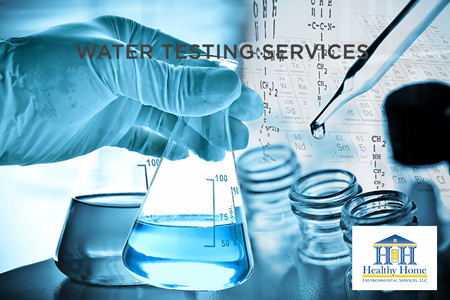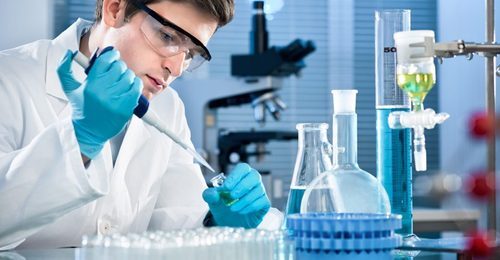Learn How Water Testing Can Discover Pollutants and Protect Your Family's Wellness
Comprehending the importance of water testing is crucial for securing your family members's health, as our water supply can harbor undetected risks. From bacteria to heavy metals, pollutants present serious threats, often undetectable without appropriate analysis. By exploring the auto mechanics of water testing, one can reveal the undetectable hazards hiding in apparently pristine water resources. How do you identify which examinations are essential for your family, and what actions should be taken once possible threats are disclosed? As we navigate these concerns, the path to making sure water security and a much healthier living environment becomes clearer.
Significance of Water Testing
Acknowledging the critical role water plays in sustaining life, the value of water screening can not be overemphasized. Ensuring that water is free from dangerous substances is critical for maintaining healthy and balanced areas and environments. Water Testing Services Near Me.
Water screening acts as an aggressive measure to identify prospective hazards that may compromise water high quality. With organized evaluation, it helps detect physical, chemical, and organic parameters that might posture risks to human health and wellness. Regular testing permits the early discovery of problems, helping with prompt treatments to stop prevalent contamination and associated illness.
Moreover, water screening sustains regulative conformity, ensuring that water carriers meet well-known safety standards and guidelines established by governmental authorities. It cultivates transparency and responsibility, developing public depend on in the water system system. Moreover, screening provides beneficial data that notifies water monitoring strategies, making it possible for sustainable usage and conservation of this precious resource.
Essentially, water screening is an essential device that safeguards public wellness, makes sure governing adherence, and advertises the sustainable management of water sources. Its relevance in safeguarding both neighborhoods and people can not be underestimated.
Usual Water Pollutants
Amongst the numerous elements that can compromise water quality, usual water contaminants include a series of physical, chemical, and biological compounds that present substantial dangers to human health and the environment. Physical pollutants typically entail debris or organic products suspended in water, which can influence clearness and taste. Chemical impurities include a wide range important, consisting of chemicals, herbicides, steels like lead and mercury, and industrial chemicals. These chemicals can infiltrate water supplies through agricultural drainage, commercial discharges, or leaching from pipes and storage space containers.
Organic pollutants, mainly bacteria, infections, and protozoa, occur from human and animal waste getting in water systems. Pathogens such as E. coli, Giardia, and Cryptosporidium are well-known for creating intestinal diseases and can be particularly unsafe to kids, the elderly, and those with jeopardized body immune systems. Nitrates and nitrites, frequently coming from fertilizers, present another health risk, especially to infants, potentially resulting in problems like methemoglobinemia or "blue child syndrome."
Furthermore, emerging contaminants, consisting of drugs and individual treatment items, have actually raised issues as a result of their persistence and unidentified long-term impacts. Recognizing these contaminants is essential for executing efficient water therapy techniques and making certain safe alcohol consumption water.
Exactly How Water Testing Functions
Recognizing the spectrum of impurities in water highlights the importance of reliable testing approaches to safeguard public health and wellness. Water screening is an organized procedure developed to identify and quantify numerous pollutants that can posture dangers to human health. This includes a series of analytical treatments that detect impurities such as bacteria, hefty steels, organic chemicals, and other toxins. The testing procedure typically begins with example collection from the water resource, guaranteeing that samples are depictive and uncontaminated throughout the collection procedure.
Chemical testing usually includes spectrometry or chromatography, both of which can identify and gauge certain chemical compounds. Additionally, physical features like pH, turbidity, and color are examined to offer understanding right into the total high quality of the water.
The precise approaches utilized in water screening depend upon the particular impurities of concern and the water's planned use. By regularly using these rigorous testing protocols, scientists and public health and wellness officials can make sure the security and high quality of water, thus safeguarding areas from possible health hazards.
Choosing the Right Test
The initial action is examining the water resource-- be it municipal, well, or surface water-- as each has unique dangers. Local water may need screening for disinfectant byproducts, while well water may need testing for nitrates, bacteria, and heavy steels.
Next, consider recent events and environmental variables. Neighboring agricultural tasks could demand testing for chemicals and find more info herbicides, whereas industrial zones can require look for chemical pollutants. Additionally, any kind of modifications in water preference, odor, or appearance ought to motivate certain screening for usual pollutants like lead, chlorine, or organic pathogens.
Specialist water testing solutions provide detailed sets that target a wide variety of potential impurities. These kits usually align with criteria set by the Environmental Defense Company (EPA) or local health divisions. For a more tailored method, this talking to a water top quality expert can give insights right into which specific tests are essential based on local problems and private health and wellness requirements, making certain the protection of your home's wellness.

Keeping Water Safety

In addition to screening, proper maintenance of water supply plays a vital role. This includes servicing and checking pipes systems, tank, and septic tanks to stop leaks or backflow that could introduce impurities - Water Testing Service. Utilizing water purification systems developed to attend to certain local issues can further protect against impurities, giving an added layer of security
Public awareness and education are equally essential in preserving water safety and security. Neighborhoods must be educated about possible risks linked with regional water sources and the required actions to alleviate them. Encouraging public engagement in water safety and security initiatives promotes a collective responsibility that improves overall performance.
Eventually, a comprehensive approach that incorporates routine testing, system maintenance, and community involvement is important in guarding water quality. By doing so, families can be ensured of secure and tidy water, shielding their wellness and wellness.

Final Thought
Normal water testing is crucial for determining impurities such as microorganisms, hefty metals, and chemicals that pose wellness dangers. By examining water examples, hidden risks can be spotted, making certain the stipulation of risk-free alcohol consumption water. This proactive strategy aids create a much healthier environment and helps with informed decision-making relating to water security. Selecting proper testing techniques and maintaining alertness in water quality are vital steps in securing public wellness and making certain the wellness of all house participants.
Comprehending the importance of water screening is important for guarding your family's health and wellness, as our water supply can harbor hidden risks.Water screening serves as a positive measure to identify possible risks that might compromise water high quality.In addition, water testing supports governing compliance, making certain that water suppliers fulfill established security standards and guidelines established by governmental authorities. Local water might call for testing for disinfectant by-products, while well water might require testing for nitrates, bacteria, and heavy steels.
Regular water testing is an essential element see post in keeping the high quality of water sources, allowing timely interventions prior to contaminants reach hazardous levels.